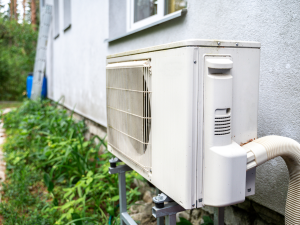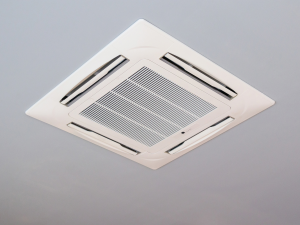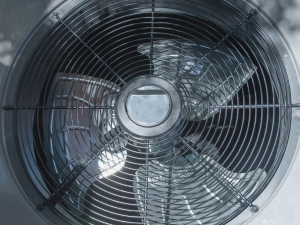Anyone shopping for a new AC system for their home will come across these two main options: a mini split or a central air conditioner. However, not many people know the difference or can determine which one fits their home best. A professional technician can install either a ductless mini-split or a central air system.
While the ultimate goal is to cool your home during those hot days, having the right AC system is also quite essential. That’s why a mini split vs. central air conditioner comparison is important before making the final decision.
Ultimately, the choice for mini splits vs. central air will depend on various factors like the size of the house, the area’s climate, the home layout, and the budget. To make things easier for you, this mini split vs. central air guide offers everything you need to know about the two. We will highlight how the two work and what they cost (purchase and installation), as well as the pros and cons of owning each.
Mini Split vs. Central Air Conditioners: Main Differences?
What is a Central Air Conditioner?
As the name goes, a central air conditioner is a device that helps to cool down your home from a central point. The system uses supply ducts to distribute cool air throughout the house and return ducts to remove the warm air indoors.
This system of supply and return ducts usually has various openings on the ceilings, walls, or floors. And they are always covered with grills. Generally, a central air conditioner will not have any form of wiring or many devices as seen in some other systems.
The system consists of two main parts – the condenser (outside unit) and the evaporator coil (indoor unit). The condenser contains refrigeration elements, a fan, and electrical components. A refrigeration line connects these two units.
What is a Mini Split?
A mini split refers to an AC unit that combines both window and central air conditioning but in the absence of ductwork. Also known as a ductless system, a mini split contains three components: the indoor unit that is usually mounted near the ceiling, an outdoor condenser, and the cooling conduit connecting the two.
In addition, unlike a central air conditioner, a mini split has numerous electrical components. The connecting conduit is made up of cooling tubes, condensate drain, and power supply.
The outdoor unit pumps cold air into the system while the indoor unit distributes the air to the desired rooms. With a mini split air conditioner, different rooms or cooling zones will have a separate indoor unit.
This makes it easier to cool each room separately without having to cool the entire house. Some mini splits can have as many as nine cooling zones.
Ductless Mini Split vs. Central Air Conditioner: Core Differences
These are the main ways in which these two types of air conditioning systems differ.
1. Cooling Mechanism
In terms of temperature control, the operation of a mini split vs. central air conditioner system is different. A mini split uses an indoor unit for each cooling zone while a central air system cools the entire house from a central location, distributing cool air through ducts.
With mini splits, you can control the temperature in each room/zone. A central air conditioner doesn’t allow this.
2. Purchase, Installation, and Running Costs
If you are working with a budget, the cost is a major determinant of the type of system you choose. A central air conditioner is cheaper to acquire and install than a ductless system. According to a report by Energy.gov, it may cost around 30% more to install a ductless system than it is to install a central one.
On the other hand, ductless air systems are more economical to operate in the long run. And they require less maintenance and repairs.
3. Design Elements
Central air conditioner components are hidden inside the walls, floors, or ceilings. This way, you don’t even notice they are there, except for the sound when the AC is on. For this reason, you don’t have to worry about it not matching with your décor.
On the other hand, ductless AC systems are visible, as they comprise several indoor units that might be present in each room. These might disrupt your décor or interior design, which some people won’t like.
4. Installation
The installation of these two systems is quite different. For instance, a central air conditioning system requires a lot of ductwork to be able to distribute cool air and remove the warm one from the house. If you want to install a central AC system in an old house, this might require a significant amount of work and money.
In contrast, ductless systems are pretty easy to install. All you need is a small opening on the wall to allow the installation of the conduit (refrigerant lines). Indoor wall units are also easy to install as they just need some screws to fasten them to the wall.
Central AC vs. Mini Split: Pros and Cons
The Pros of Central AC
- It’s cheaper to install if you are installing it in a new home or an existing home with ductwork.
- It is ideal for cooling large spaces.
- It offers uniform temperatures throughout the entire house.
- The whole system, including the ductwork, is concealed in the walls and ceilings.
The Cons of a Central AC
- If you don’t choose the right AC size for your home, you might not get the right optimal temperatures.
- The ductwork may be leaking, causing temperature inconsistencies
- Installing the ductwork from scratch can be expensive if you are dealing with an existing house.
- The system might not be ideal for some homes due to structural complications and limitations.
- The central air system is expensive to run since it cools the entire house despite some rooms not requiring cooling.
- It is noisier.
Pros of a Mini Split Air Conditioner
- They are convenient and easy to install since they don’t require ductwork.
- If you want different temperatures for different rooms or zones, a mini split works best.
- The system is quieter, and you might not even notice its operations.
- It saves on cost since you can cool some rooms and leave others, thus reducing energy usage.
- Most of these systems are more energy-efficient than other types of ACs.
Cons of a Mini Split
- The initial cost might be substantial, especially if you need more indoor units.
- They are usually not ideal for cooling extensive areas.
- The indoor unit is visible and might disrupt your interior décor.








